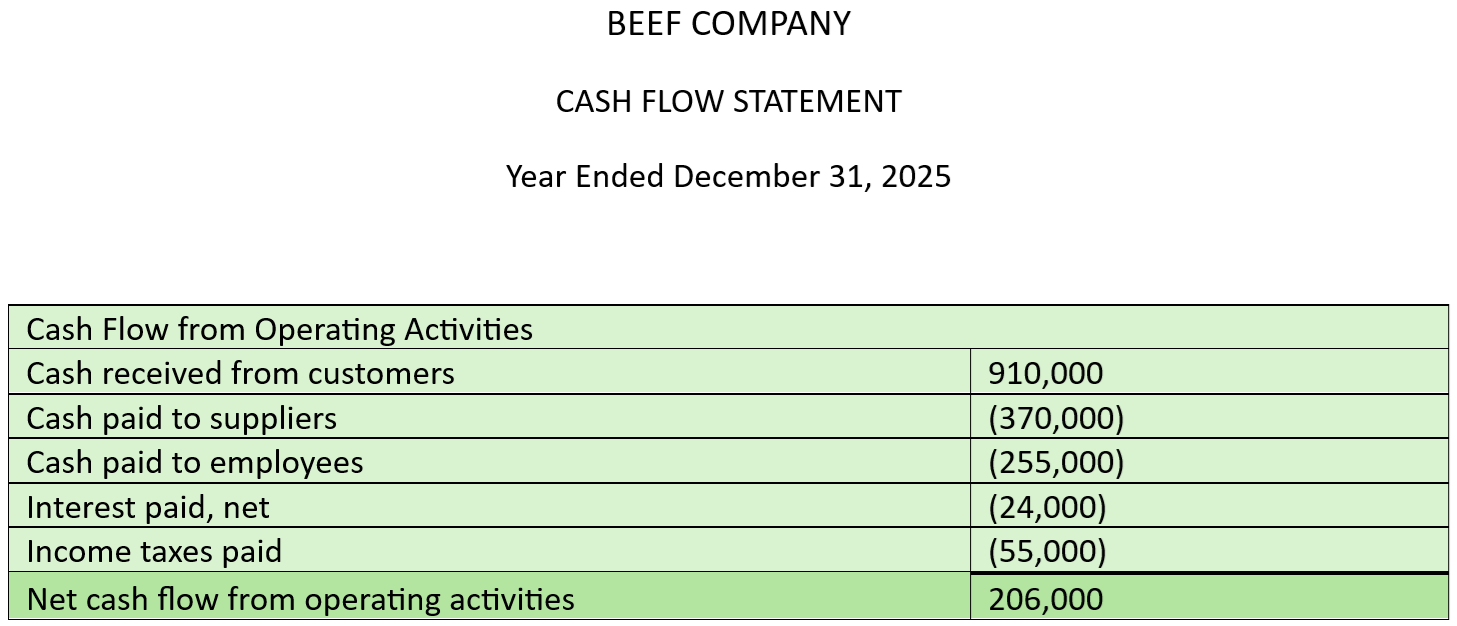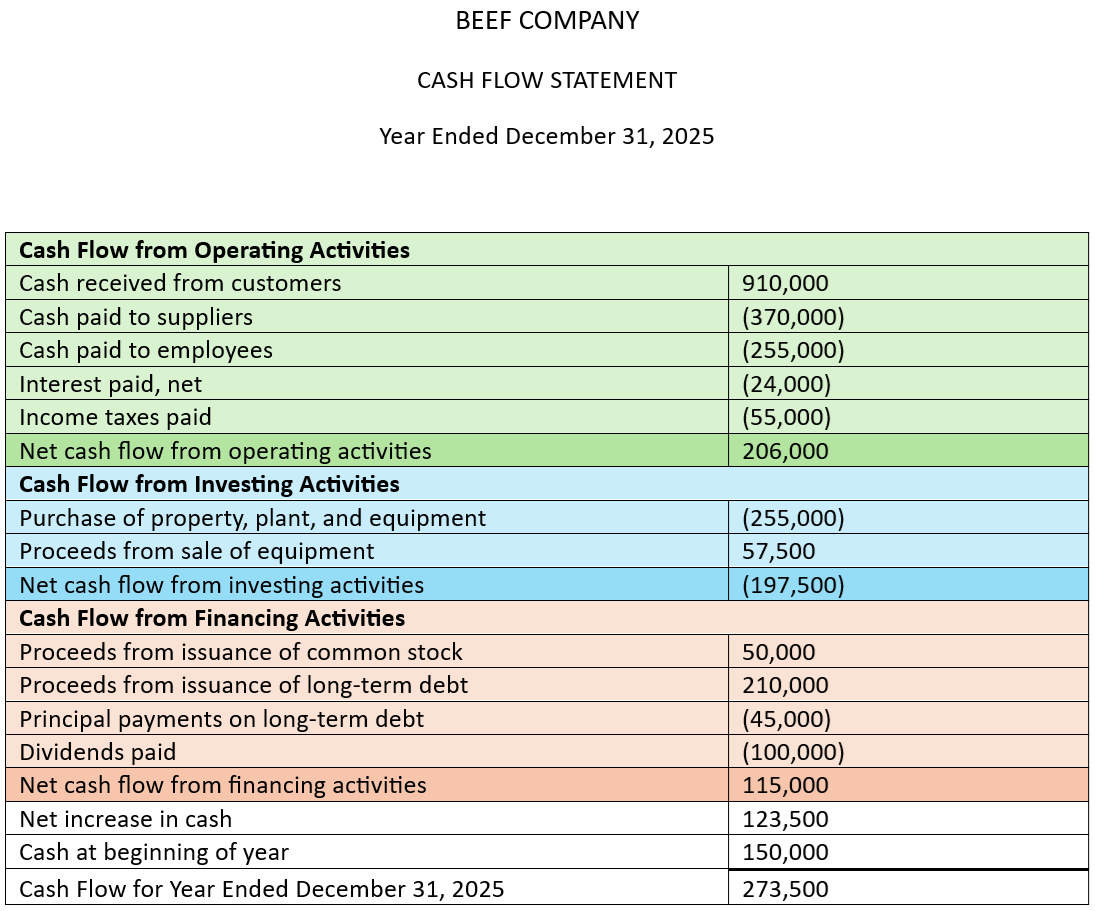
Cash Flow Statement
Cash Flow Statement
For those who may prefer, this presentation covers the same principles explained in the text below:
Contents:
Fundamental Definitions
Differences in Categorisation
Differences in Reporting
Basic Cash Flow Statement
Goals of the Analysis
Ratios
Important Analysis Questions
Thank you
“What Should I Do Next?”
Contact Information
Introduction
Fundamental Definitions:
Cash Flow Statement (Statement of Cash Flows)
A financial statement that summarises the amounts of cash and cash equivalents that entered and left a company over a specific period.
It helps analysts and investors understand how well a company manages its cash flow, meaning how well the company generates cash to pay its debt obligations and meet its operating expenses.
Cash Equivalents: Short-term (three months or less) investments that are easily sold, have high credit quality, and are readily convertible to known amounts of cash. Examples include U.S. Treasury Bills (T-Bills).
The cash flow statement is divided into three sections:
Cash Flow from Operating Activities
Cash Flow from Investing Activities
Cash Flow from Financing Activities
Cash Flow from Operating Activities
Cash flow resulting from the regular business operations of the company. This generally involves cash generated from the company’s products and services.
When this cash flow is positive, it means the company is achieving a positive net cash flow from its normal business operations.
When this cash flow is negative, it means the company is failing to earn a positive net cash flow from its normal business operations.
Cash Flow from Investing Activities
Cash flow associated with investment activities conducted by the company. This may involve the purchase or sale of property, plant and equipment; intangible assets; other non-current assets; and long-term and short-term investments in equity and debt.
When this cash flow is positive, it indicates that the company is selling investments.
When this cash flow is negative, it indicates that the company is increasing investment.
Cash Flow from Financing Activities
Cash flow resulting from the company obtaining or repaying capital for business operations.
When this cash flow is positive, it indicates that the company has raised capital through activities such as selling bonds, taking on loans, and issuing stock.
When this cash flow is negative, it indicates that the company has paid out capital for activities such as paying off debt, making dividend payments, and stock repurchases.
IFRS versus GAAP
Differences in Categorisation:
IFRS
International Financial Reporting Standards (IFRS)
Followed by companies in about 150 countries, including those in the European Union (EU).
GAAP
Generally Accepted Accounting Principles (GAAP)
Predominant accounting principles, standards and procedures followed by companies in the United States.
Interest Paid
IFRS: Operating or Financing Activity
GAAP: Operating Activity
Dividends Paid
IFRS: Operating or Financing Activity
GAAP: Financing Activity
Interest Received
IFRS: Operating or Investing Activity
GAAP: Operating Activity
Dividends Received
IFRS: Operating or Investing Activity
GAAP: Operating Activity
Direct and Indirect Methods
Differences in Reporting:
Cash flow from operating activities may be presented in one of two different formats:
Direct Method
Indirect Method
IFRS and GAAP accept both methods, but encourage the direct method.
Direct Method
Cash receipts from operating activities less cash payments from operating activities.
Indirect Method
Begins with net income from the income statement. Additions and subtractions are then applied to arrive at operating cash flow.
Basic Cash Flow Statement:
Using the Direct Method:
Cash Flow Statement Analysis
Goals of the Analysis:
Overall Goals of the Analysis
Understand and evaluate the sources and uses of the company’s cash flow in each of the three main categories (operating, investing and financing).
Ratios:
Performance Ratios:
Cash Flow to Revenue
CFO / Revenue
Cash Return on Assets
CFO / Average total assets
Cash Return on Equity
CFO / Average shareholders’ equity
Cash to Income
CFO / Operating income
Cash Flow per Share *
(CFO – Preferred dividends) / Number of common shares outstanding
* If the company reports under IFRS and includes total dividends paid as a use of cash under operating activities, total dividends should be added back to CFO before preferred dividends is subtracted.
Coverage Ratios:
Debt Coverage
CFO / Total debt
Interest Coverage *
(CFO + Interest paid + Taxes paid) / Interest paid
Reinvestment
CFO / Cash paid for long term assets
Debt Payment
CFO / Cash paid for long term debt repayment
Dividend Payment
CFO / Dividends paid
Investing and Financing
CFO / Cash outflows for investing and financing activities
* If the company reports under IFRS and includes interest paid as a use of cash under financing activities, then interest paid should not be added back to the numerator.
Important Analysis Questions:
Does the company source most of its cash flow from operating, investing or financing activities?
What are the major determinants of operating cash flow?
How relevant are the company's main sources of cash flow to its core products and/or services?
Have the levels of operating cash flows been consistent over time?
Is operating cash flow positive and sufficient to cover capital expenditures?
How sustainable are the company's sources of cash flow?
What are the major uses of the cash flow?
What are the primary determinants of investing cash flow?
What are the primary determinants of financing cash flow?
Capital Expenditure (Capex)
Capital expenditure involves what a company spends to maintain existing property and equipment, and invest in new technologies and other assets important for future growth.
Conclusion
Thank you for visiting School of Value Investing.
“What should I do next?”
Learn to speak the language of business and investment like the legends:
Check out Warren Buffett Investing Series II.
Become a more intelligent investor by understanding the Commodities Investment Industry.








